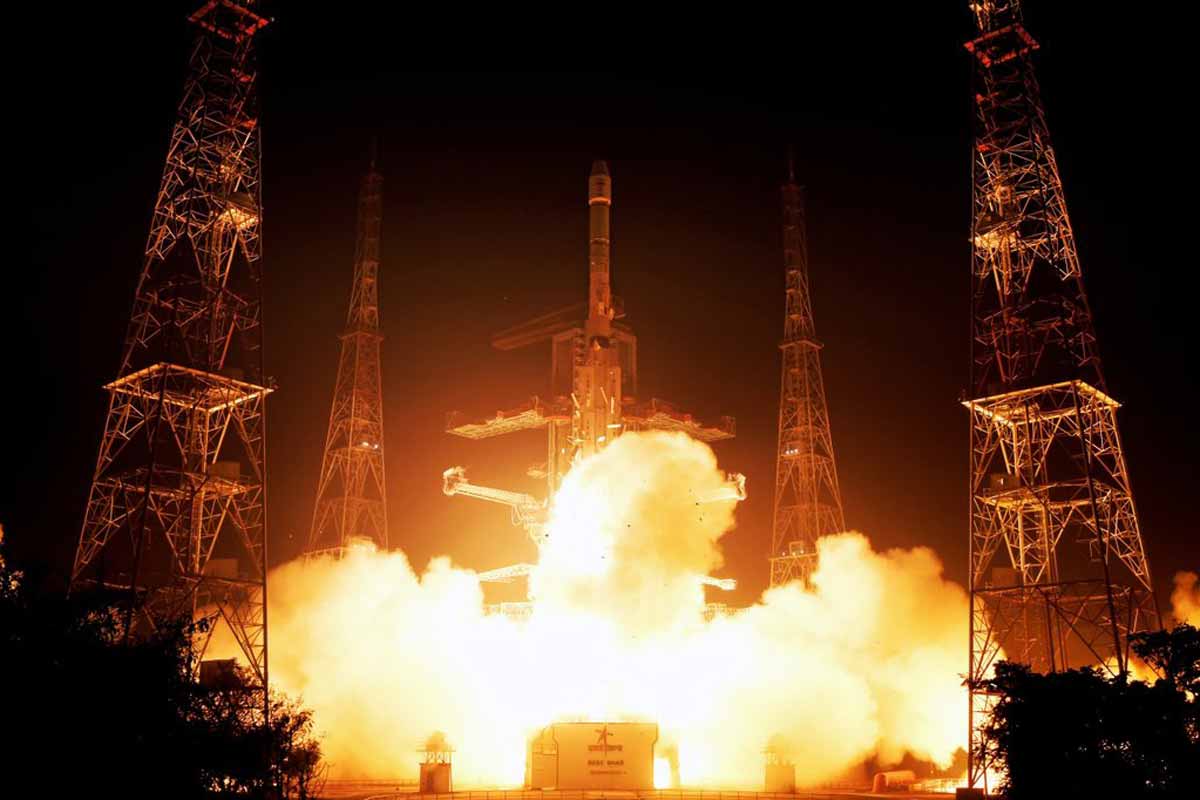Mission Divyastra – India’s Agni 5 ICBM with MIRV Technology: Indian Prime Minister Narendra Modi Monday (March 11) announced successful test-firing of India’s Agni-5 missile with advanced MIRV technology which makes India’s nuclear deterrence more potent as it is difficult for an adversary to intercept multiple warheads. With successful test-firing of Agni-5 missile with MIRV capability, India’s strategic missile program took a significant step forward as the country’s has joined select group of nations having Multiple Independently Re-entry Vehicle (MIRV) technology. This marked a crucial advancement in India’s indigenous missile development and deterrence capabilities.
“Proud of our DRDO scientists for Mission Divyastra, the first flight test of indigenously developed Agni-5 missile with Multiple Independently Targetable Re-entry Vehicle (MIRV) technology,” Prime Minister Narendra Modi said in a post in the micro-blogging platform X.
Agni-5 missile with MIRV technology was the culmination of decades of dedicated efforts poured into the Agni missile series, a family of missiles that forms the backbone of India’s deterrent arsenal.
READ: CCS nod for India’s 5th Gen Stealth Fighter Jet AMCA
Mission Divyastra: India’s MIRV based ICBM
The success of Mission Divyastra marked a turning point in India’s missile program. Equipping the Agni-5 with MIRV technology significantly enhances its strategic deterrence value. With a single missile carrying multiple warheads, it becomes much harder for an enemy to intercept all incoming threats. This development strengthens India’s second-strike capability, deterring potential adversaries from launching a nuclear attack.
The success of Mission Divyastra marked a turning point in India’s missile program. Equipping the Agni-5 with MIRV technology significantly enhances its strategic deterrence value. With a single missile carrying multiple warheads, it becomes much harder for an enemy to intercept all incoming threats. This development strengthens India’s second-strike capability, deterring potential adversaries from launching a nuclear attack.
READ: MoD signs 5 major defence contracts worth Rs 39,000 crore

India’s Agni-5 missile with MIRV capability.
The Agni Missile – Backbone of India’s nuclear deterrence
Developed by the Defence Research and Development Organisation (DRDO), the Agni series boasts a range of intercontinental ballistic missiles (ICBMs) and intermediate-range ballistic missiles (IRBMs) with varying capabilities. Let’s take a closer look at each:
Agni-1: With a range of around 700 km, Agni-1 is the first operational missile in the series. It entered service in the early 1990s and is a single-stage, road-mobile, solid-fueled missile.
Agni-2: This single-stage missile, also road-mobile and solid-fueled, has a range exceeding 2,000 km. It forms a critical part of India’s short-range deterrent capability.
Agni-3: Agni-3 marks a significant jump in range, reaching up to 3,500 km. This two-stage missile with a mobile launcher provides increased reach for strategic targets.
Agni-4: Entering service in the late 2010s, Agni-4 boasts a range of around 4,000 km. This two-stage missile with a longer reach and improved accuracy solidified India’s position as a major missile power.
Agni-5: The crown jewel of the Agni series, Agni-5 is a three-stage ICBM with a range exceeding 5,000 km. It can potentially strike targets across Asia and even beyond. The successful Mission Divyastra demonstrated Agni-5’s capability to carry MIRVs, allowing it to hit multiple targets with a single launch.
Agni-P: This recently tested variant focuses on mobility and adaptability. Agni-P is a canisterized version of the older Agni missiles, offering faster deployment and launch capabilities.
READ: Yogi inaugurates Adani Group’s mega defence factory in Kanpur
Future trajectory of Agni missile Programme
India’s Agni missile program is poised for achieving longer range in future. India’s apex defence research body, the DRDO is reportedly developing Agni-6, expected to be a full-fledged ICBM with a range exceeding 7,000 km.
This continued focus on indigenous missile development ensures India’s strategic autonomy and strengthens its position as a major player in the global security landscape.
READ: Union Budget: No change in tax structure, FM sticks to path of fiscal consolidation
Mission Divyastra – Sovereign capability against nuclear blackmail
Mission Divyastra stands as a testament to India’s growing prowess in missile technology. The Agni series, with its diverse range and capabilities, serves as a vital deterrent for the nation and offers a potent weapon against the nuclear blackmail by its adversaries such as China and Pakistan as both are nuclear armed nations. As India continues to refine and expand its missile program, the world can expect to see further advancements in the years to come.













